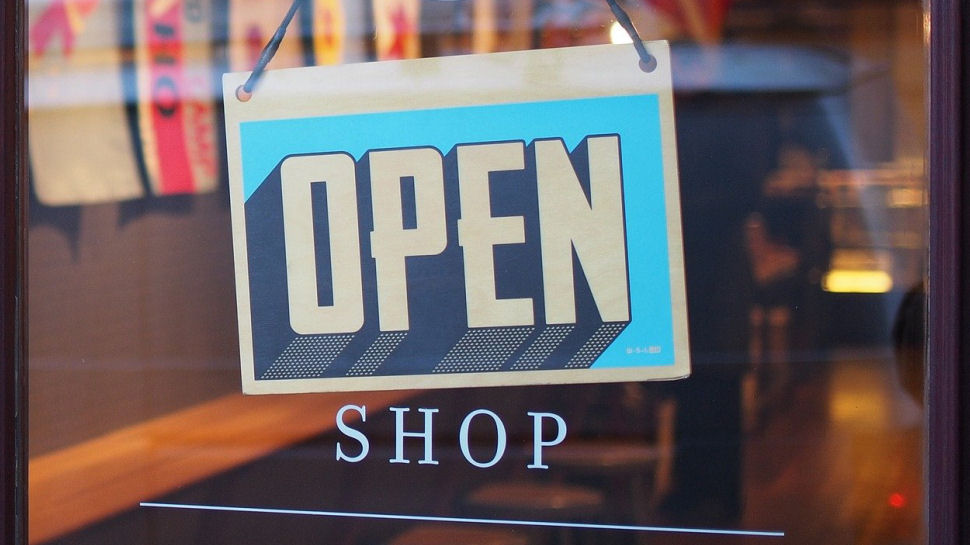Using digital to build resilience through new retail experiences
How retailers can use digital to build resilience

The retail industry experienced enormous challenges and changes last year, as have many others such as travel, transport and hospitality (TTH). The need to find different ways to serve customers and build resilience into entire business models has shifted the conversation around digital transformation - and accelerated its imperative.
The idea that digital must be central to how we reimagine the world of retail and the TTH sectors is not new. Writing for the British Retail Consortium (BRC), KPMG’s UK Head of Retail Paul Martin described the UK’s second lockdown between November and December of last year as ‘a tale of two channels’. That is, while high street retailers’ performance fell, online sales rose by double figures across most categories.
As we look forward from the pandemic, continued investment in engaging and responsive customer service, both online and in-store, must be a key component of every retailer’s digital transformation journey. When it comes to the TTH industries, staying connected via web chat, online apps and self-service will keep customers on track before, during, and after their journey.
For all sectors, ultimately, the capability to provide informed and seamless experiences for customers, to empower employees as effective brand ambassadors, and to redefine brand presence will determine business resilience in the evolving digital economy.
Safe and seamless experiences
In spite of the boom in retail ecommerce, the pandemic has heightened our need for human interaction. We’ve seen physical stores transformed to deliver a safer, smarter and more unified experience. Take Halfords for example, who evolved how their stores and garages operated, with their “Drive in, fit and repair” proposition for essential motoring and cycling services alongside a “Fast track click & collect”. Bringing augmented reality to fitting rooms is also an excellent example of innovation; allaying customer concerns around hygiene while creating a highly personalized and connected experience. As we anticipate the increased rise of online buying and in-store collections, deploying in-store associates to demonstrate products and provide expert advice will transform how we complement virtual and in-store experiences.
In the TTH sectors, the challenges are different but not insurmountable. To move beyond stabilization and return to growth, agility is a must. Beyond deploying traditional tactics such as loyalty programs and promotions, TTH brands must leverage the power of data to better understand the interests and behaviors of travelers and guests. Personalizing every engagement and offering tailored services will be crucial to generating greater customer value and loyalty. As well as reducing operating costs and increasing efficiency in reporting, data-driven measurement strategies are helping companies to optimize their marketing performance and return on investment.
Your employees are your brand
In retail, employees are a key part of the in-store and online experience. As brand ambassadors, in-store associates’ enthusiasm and knowledge can make customer experiences memorable and productive. Equipped with the right data and information, they can deliver more positive engagements with customers wherever they are - in-store, over-the-phone or online.
Are you a pro? Subscribe to our newsletter
Sign up to the TechRadar Pro newsletter to get all the top news, opinion, features and guidance your business needs to succeed!
Using technology to create a 360-degree view of the customer enables employees to build relationships by accessing key insights and becoming their trusted advisers. In retail, this can be as simple as providing associates with mobile devices so they can check item inventory and make recommendations in real-time. In tourism, given the growing trend of booking online, asking a few simple questions at the point of booking can help hoteliers become true concierges. As traveler expectations heighten, being available to answer queries efficiently, will play an increasingly important role in maintaining trust. With the resources to resolve customer issues, companies can serve faster and make their teams more productive.
Just as customer expectations are changing, so are the technologies that companies need to serve them effectively. As well as accelerating the imperative to digitally transform business models, the pandemic has hastened the need to future-proof the workforce. Empowering employees with the insights and training not only better prepares them to offer a great customer experience. It positively impacts on job-satisfaction and confidence they need to succeed and prepare for the new jobs that will emerge. As the digital economy evolves at pace, now is the perfect time to re- and upskill teams.
During the pandemic we’ve seen companies instill resilience into their business models as well as the career paths and opportunities of their people. In the UK, for example, when the pandemic hit, one of our own customers in the transport sector had a huge proportion of their crew and operational staff go from working at full capacity to being under-deployed. At the same time, hundreds of their contact center colleagues were struggling to deal with a rising backlog of passenger queries and requests for refunds. The solution was to equip those operational staff with the skills to deal with customer queries, a huge team effort which helped maintain their high customer service standards and has in turn, helped prepare the company to transition in a post-pandemic world.
Redefining brand presence
How companies show up and serve customers will be a key indicator of success in the digital economy. For retail customers and travelers alike, having the opportunity to engage and access services anytime, anywhere will build greater brand loyalty and advocacy. From more QR codes and payment methods to contactless room keys, the innovations we see in these industries will stay and only accelerate.
Delivering a connected experience requires a deep understanding of customers as online and offline moves closer together. Businesses across all industries must adopt an omni-channel approach, ensuring consistency in experiences. Put simply, wherever customers are, and whatever device they choose, they must always feel like they are dealing with the same retailer, travel company or hospitality venue.
Over the coming months, retail and TTH industry strategies in particular will aim to build resilience and brand presence by driving new revenue streams and reimagining their customer experience offering. Having a 360-degree view of every customer must be a cornerstone of this strategy, providing contextually-aware and personalized services, recommendations and promotions. For the customer, this means a better experience and a smoother shopping journey online. For businesses, in addition to building resilience, it will also help them diversify how they serve customers throughout 2021 and beyond.
- Michael Green. Head of Retail and TTH, Salesforce UKI.
- Support customers with the best live chat software and best helpdesk software.
Michael Green is Senior Area Vice President, Enterprise Sales and UK Business Leader at Salesforce.
